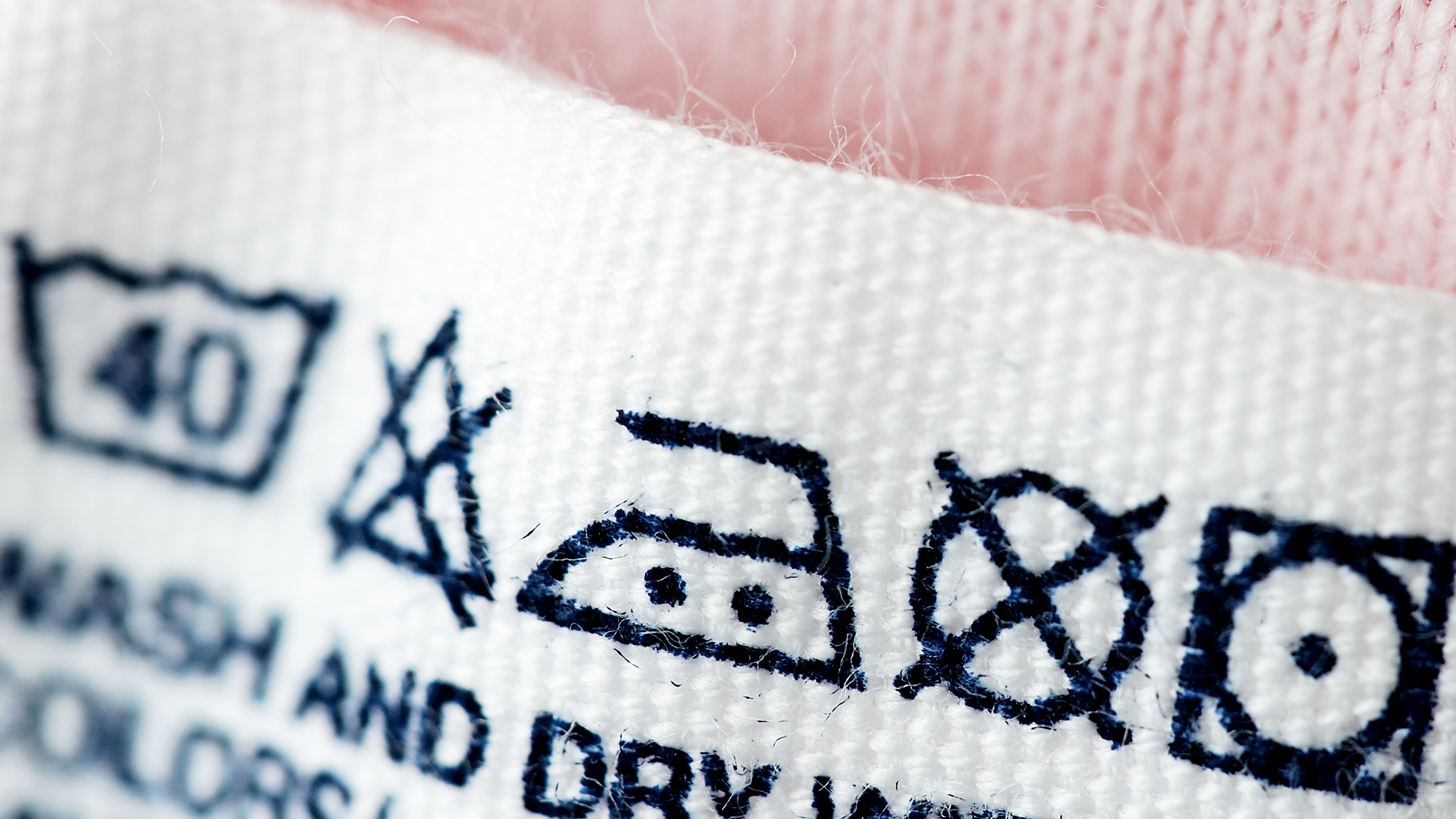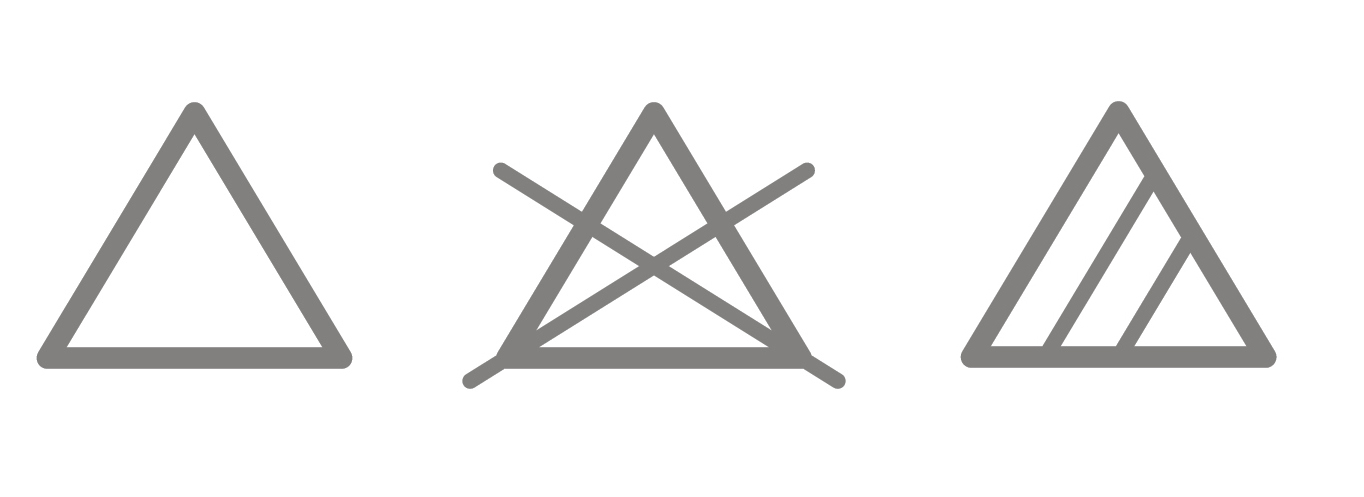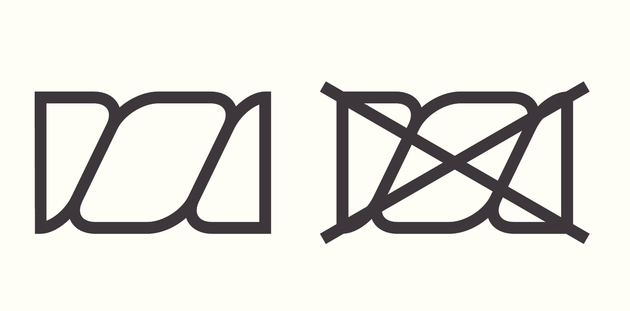What do the symbols on your clothing labels really mean?
Washing care decoded


Washing care decoded
We’ve all been there. Got a fab new cashmere top, worn it once, put it in the wash and completely shrunk it, because we put the washing machine on the same old cycle we always use.
It sounds totally obvious, but the symbols on your clothing labels are there for a reason, and you could avoid so many clothing disasters just by reading them carefully.
So here’s a quick breakdown of what they mean - and if you’re curious, we’ve decoded the symbols on all your beauty products here. If you want to treat yourself to some new clothes, don't forget to check out our Yours Clothing discount codes.

Filled in basin
This symbol is for washing cotton garments, and is usually filled with a number which indicates the maximum temperature you can wash out, e.g., 40 degrees.
Filled-in basin with a single bar underneath
This applies to synthetic items, which should be washed in mild conditions, so not over 40 degrees.
Filled-in basin with two bars underneath
Applies to wool products, so should be washed on the wool cycle at a low temperature
Marie Claire Newsletter
Celebrity news, beauty, fashion advice, and fascinating features, delivered straight to your inbox!
Basin with a hand
As you might have guessed, this means you need to wash the item by hand, with water temperature at a maximum of 40 degrees.
Crossed-out basin
This means it’s not suitable for washing full stop.

Square with a circle in it
This means the item can be tumble dried at a normal heat setting.
Square with a circle and a dot
You can tumble dry this, but at a low temperature.
Square with a circle and two dots
This is suitable to be tumble dried at a high heat.
Square with a crossed-out circle
Not suitable to tumble dry.

Square with a line in it
If you’re hand washing items, this symbol means these should be laid flat to dry, as hanging them might affect their shape.
Square with a semi-circle
This means you can hang the items on a line or rack.
Square with three vertical lines
This means you can let the items drip dry. This tends to be synthetic items that aren’t likely to lose their shape.

Iron with one dot
For delicate items, this means basically using a ‘cool’ iron, so less that 110 degrees, and no steam.
Iron with two dots
Mid-heat, i.e., temperature of less than 150 degrees.
Iron with three dots
This is the hottest setting, with a temperate of 200 degrees. Usually for denim, linen and cotton.
Crossed-out iron
This means you won’t be able to iron the item at all, even if it’s just steaming it.

Triangle
This only applies to whites, if your item has gone a bit grey, you can black it with chlorine based bleach.
Triangle with two lines
You can bleach the garment, but with a non-chlorine bleach.
Crossed-out triangle
Avoid bleach altogether.

Circle
If you’re more of a dry cleaner person, then these are the symbols you need to look at. The circle means your garment can be dry cleaned.
The letter in a circle
This is for the dry cleaner’s use, to know which process is required to clean the item.
A crossed-out circle
Not suitable for dry cleaning.

A twisted garment symbol
You can wring the garment to get rid of excess water.
A crossed-out garment symbol
You can't wring the item or you'll damage it.
Penny Goldstone is the Contributing Fashion Editor at Marie Claire UK. She writes about catwalk trends and the latest high street and Instagram sartorial must-haves. She also helms the Women Who Win franchise.
She has worked in fashion for over 10 years, contributing to publications such as Cosmopolitan, Red, Good Housekeeping, and Stylist.
-
 Style Briefing: Matthieu Blazy's last hurrah at Bottega Veneta
Style Briefing: Matthieu Blazy's last hurrah at Bottega VenetaHow the designer delivered a fresh perspective while also honouring its history of craft and creativity
By Rebecca Jane Hill
-
 The Emily in Paris cast has spoken out as one of its stars officially quits the show
The Emily in Paris cast has spoken out as one of its stars officially quits the showBy Jenny Proudfoot
-
 Timothée Chalamet’s mother has opened up about his relationship with Kylie Jenner
Timothée Chalamet’s mother has opened up about his relationship with Kylie JennerBy Jenny Proudfoot